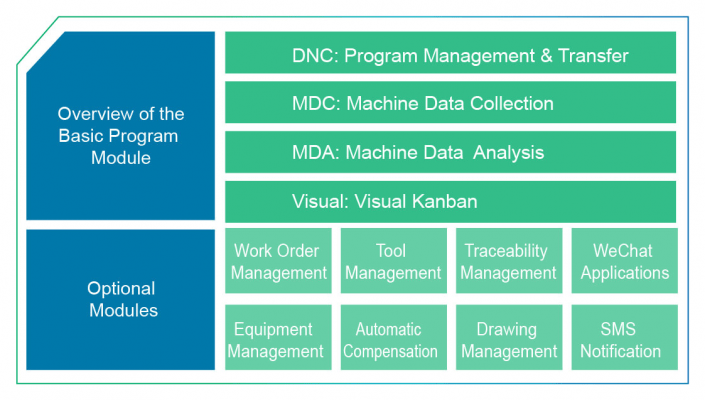What’s Old Is New Again—CNC Systems Join Industry 4.0
It's an astounding fact that CNC machines have been in use at factories worldwide for more than a half-century. What is considered the first true numerical control machine was in use not long after WWII – manufacturing helicopter blade templates. While they may seem like an old story, CNC machines are definitely hot again.
Many of today's technology-driven products require precision-machined parts and components. Automobiles have countless advanced sensors, precision sheet metal, and powerful control systems. Smartphones need tight tolerances for internal components and casings. To put this into perspective, in 2017 around 1.54 billion smartphones were sold worldwide. This kind of volume, combined with the unrelenting pressure on lowering costs, is a great example of why CNC systems are so critical to manufacturing operations.
Next-generation CNC systems cost less, are smarter, and with built-in IoT technology they can be more easily integrated into Industry 4.0 initiatives. But the increasing number and types of CNC machines on a factory floor introduce big challenges.
Manufacturing equipment has a long lifespan, and legacy CNC systems are still critical tools in factory output. But they use proprietary protocols to connect to the production environment. The result is factories around the globe host a variety of machines from multiple system manufacturers that range in age and intelligence, using non-interoperable protocols.
This is where the CNC Machine Data Collection and Analysis Automation System from IEI Integration Corp. come in. The IEI solution enables data collection and analysis, for legacy systems, offering smart factories important benefits across operational and management vectors (Figure 1).

“Big data and IIoT are at the core of smart manufacturing,” said Don Yu, Product Manager at IEI Integration Corp. “Gathering data requires connectivity, but many companies cannot not fully enable Industry 4.0 solutions because they have many legacy CNC machines with proprietary protocols.”
CNC—Proven Technology with a New Spin
To acquire, analyze, and respond to machine data, that data must be normalized to a common Operations Technology (OT) infrastructure. Just as you cannot view different video formats without first transcoding them to the format being displayed, data from different CNC machines must be first translated to be analyzed.
With so many different machines and non-interoperable protocols, this is not a simple task. It requires an end-to-end architecture that provides multiple-protocol translation, data acquisition and storage, real-time analytics, reporting software, and more.
Once deployed, such solutions can provide the business and operational intelligence needed to help optimize a smart factory's CNC operations. These solutions reduce operational costs, improve machine utilization, and accelerate troubleshooting and maintenance processes.
IEI has smart factory installations across China, Taiwan, and Japan. With the IEI solution, these companies have been able to realize an ROI in as little as three to six months. The company estimates many of its customers have seen an increase in quality improvement and equipment utilization rates of 15 percent, a decrease in manufacturing cycles of almost 28 percent, and a drop in inactive stock of nearly 24 percent.
One IEI customer in China manufactures automobile components on more than 100 CNC machines. Its machines vary from 10 years old to modern systems purchased only a couple of years ago.
“They were able to immediately begin collecting data from all these machines with several different protocols. The data could then be utilized in their Manufacturing Execution System to manage the output and health of all their CNC equipment,” stated Yu. “The IEI CNC management software analyzes the data from all of the machines and provides actionable insights on operations across the entire factory floor, while enabling remote control of some operations.”
Those insights have led IEI's customer to improve machine scheduling, and thus utilization, increasing production capacity.
Analytics for Multiple Insights
Besides scheduling and maintenance, the IEI solution uses several software systems that enable other key industrial use cases (Figure 2).

More Efficient System Monitoring
The solution also improves equipment health. Traditionally, machines required one operator per machine, or up to a few machines. Operators are responsible for monitoring the system as it executes its program. They watch for signals of a problem and report errors and issues to the management and technical staff.
With central analytics and monitoring, machine aberrations often can be sensed and reported before an operator notices any system issues This leads to faster troubleshooting, predictive instead of reactive maintenance, and overall better machine health, which enhances its useful life and effectiveness.
“Having valuable information available from all the machines in a single management console means our customers can be more efficient with their staffing. They need fewer operators across more machines, which improves the operators' efficiencies, and reduces errors,” commented Yu.
Leveraging Their Experience with Intel®
IEI Integration chose Intel processors and technologies for their CNC Market Ready Solution. “We have been working with Intel® for over 20 years, using their Intel processors for embedded designs,” said Yu. “They commit to long life cycles in their CPUs for industrial designs and innovate in IIoT technologies. We are able to provide smart factory solutions with high performance, endurance, and support on which our customers can rely for many years.”
The IEI Integration CNC Market Ready Solution resolves the challenges with a multitude of CNC machines and protocols on the factory floor. Deploying the IEI system enables companies to make their CNC machines smart and their factories smarter.